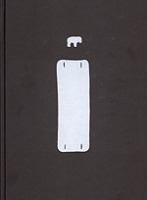| Vadim Voinov A convoluted monograph артикул 2329a. |
 |
Перед тобой, дорогой читатель, весьма необычная книга Необычен уже сам ее жанр - монография-конволют ( проще говоря - сборник) То есть герой - один, а авторов - много, даже очень много овбщж Тексты обязаны своим возникновением именно этой книге и появлялись независимо друг от друга Никто не знал заранее, о чем и как пишут коллеги Предлагаемую книгу можно рассматривать как антологию современной петербургской критики В ней оказались собранными едва ли не все возрасты, ориентации, стили, манеры, жанры и приемы Историки, критики, философы, писатели Воинов оказался фигурой "общепримиряющей" - писать о нем интересно было всем Одни авторы объявляют Вадима Воинова хранителем памяти, другие - ее разрушителем Одни полагают, что он возвращает нам подлинную историю, другие отказывают ему в "историчности" - по их мнению, художник утверждает тотальное отсутствие истории Одни авторы ищут разгадку воиновского творчества в его связях с поп-артом, другие - с советской детской литературой 1920-х годов Одни считают его радикальным, другие - старомодным Часть текстов подчеркнуто серьезна, проникнута пафосом, часть написана с явной иронией Foreword The book you are holding, dear reader, is highly unusual It is unusual from the point of view of genre, being as it is a kind of convoluted monograph (or, more simply, a collection) In other words, the protagonist is one, but the authors are many; strikingly many The texts owe their existence to this book and have appeared independently of one another No one knew beforehand what and how his or her colleague would write on the subject; this, it seems to me, is what makes this collective narrative so fundamentally intriguing Exceptions, completely justfiable, to this principle of anonymity are two earlier published articles, though even these have been, as it is called, "reworked and expanded " These are articles by Alexander Borovsky and Irina Karasik (I refer here to myself in the third person ) This has allowed us, in the first place, to include the two publications which form the foundation of work devoted to Voinov`s creative activity: the album "Bridge Over the River Styx" and the catalogue "The Exodus of Things " The word "convolution" presupposes an inventory of existing knowledge, and it is for this reason that the book includes certain kinds of commentary-a survey of the most interesting and significant publications about the artist In the second place, in these "recycled" texts the authors and the artist himself formulate their fundamental positions, their basic ideas In the space of the book, these articles acquire another context altogether, a context that ensures certain points of rest within the dialogical field that opens up here Consciously or unconsciously, the "new authors" take account of these already existingjudgments and evaluations, sometimes elaborating or continuing them, and sometimes taking issue with them This book might be seen as an anthology of contemporary Petersburg criticism Between its covers, one finds represented virtually all ages, orientations, styles, mannerisms, genres and artistic devices The range is vast-adherents of traditional approaches in art criticism, the museum establishment, radical artistic youth historians, critics, philosophers, writers Voinov proved to be a figure of "general reconciliation " Writing about him appealed to everyone; they responded eagerly to the opportunity and others took the initiative themselves when they got word of the project Certain authors hail Vadim Voinov as someone who preserves and protects memory, while others claim that he destroys it; some consider him to be an artist, capable of animating an inert thing, awakening its soul, revealing its connection to human beings Others, on the contrary, see in him a grave-digger who sings praises to dead nature Some assume that he restores to us an authentic history; others would deny him any historicity at all In their judgment, the artist asserts the total absence of history Some authors search for the key to Voinov`s creative work in his affinities with pop-art; others with Soviet children`s literature of the 1920s There are those who stress his connections to the avant-garde, and those who point out his connections with the Russian literary tradition and 19th century historical painting Some consider him to be a radical; others find him old-fashioned A number of the texts are emphatically serious in tone, imbued with pathos Certain others are patently ironic. В издании2002 г 224 стр ISBN 5-93630-196-6 Формат: 60x90/8 (~220х290 мм). |